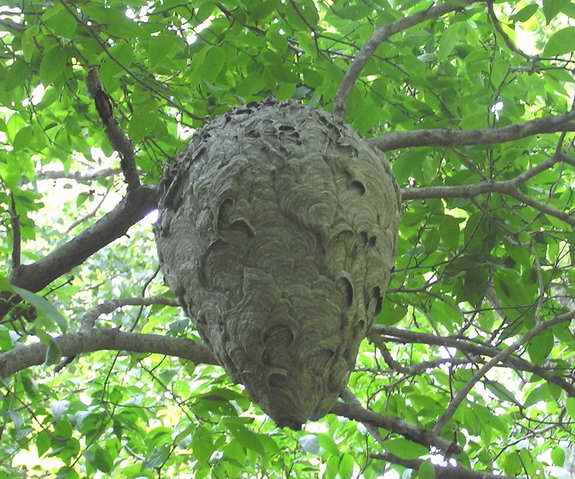|
Common
Name: Bald-faced Hornet (nest) Scientific Name: Dolichovespula maculata (Latin vespa wasp and macula spotted) The papery nest of the bald-faced hornet is a fairly common sight in defoliated trees in the winter. It is in the shape of an inverted pear with a larger diameter of about 30 centimeters at the top and a tapering point at the base, which is the hornet�s entrance. Potpourri: Bald-faced hornets� nests are made from wood particles that are chewed and mixed with saliva to form balls that are taken to the nest and rolled into paper-thin walls. The nest is built in layers to modulate the temperature at a nearly constant 35�C. Heat is added by the agitation of the muscles of the adult insects (like shivering) and heat is removed by drops of water that are brought in. The bald faced hornet a yellow jacket, not a hornet. Both hornets and yellow jackets are actually members of the suborder Apocrita, which are commonly called wasps. The species called yellow jacket has alternating bands of yellow and black while the true hornets are mostly black with yellowish markings on the face, abdomen and thorax. A single over-wintering queen bald-faced hornet starts the nest in early spring. She lays eggs and tends the first batch of larvae that hatch into female workers that enlarge the nest. In late summer, males and additional females emerge as adults and mate. In the fall, all males and young hornets die. The remaining mated females seek shelter in the debris of the forest floor. That is why the nest is abandoned and empty in the winter. |
